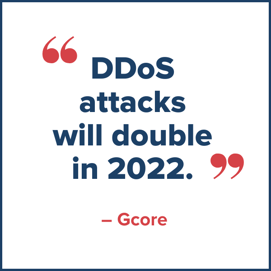
Of course, you have network monitoring tools humming away all day, every day, to help ensure that your organization’s network is secure and performing to expectations. So, what more could you need?
Visibility.
Network visibility.
Deep visibility into the intricate and complex nature of your network: its functionality, performance, connectivity, rate and patterns of application traffic, and metrics around “normal” behavior so your tools can pick up and alert on anomalies. Network visibility can drive greater efficiencies, scalability, and reliability.
It’s not easy to see everything at once, but AI tools and Managed Service Providers (MSPs) can help alleviate the pounding headache of network cacophony.
Rush Hour on Your Network Infrastructure
Once upon a time, network management was simpler when your employees came into the office to conduct business on a regular schedule. But the post-Covid remote and hybrid workforce has broadened the reach of your network; thus, network reliability across a global landscape is even more essential for collaboration, communication, data sharing, and workflow accessibility. How have you adjusted your tech stack to address this extra demand? Or have you drained your existing resources, forced to blame slow productivity on internet glitches?
Can your IT teams differentiate between spikes in network traffic that lead to slow performance and DDoS (Distributed
Denial of Service) attacks that can immobilize your entire network and operations? DDoS attacks are nefarious and aim to destabilize your network infrastructure, interrupt service, and overwhelm your bandwidth so that legitimate user requests are denied. The victim organization suffers from lost productivity, frustrated customers, lost revenue, and a possible negative impact on its brand's reputation.
 |
Steps to reduce the risk of a network outage:
- Gain visibility into your network infrastructure
- Prepare an incident response plan
- Map the assets connected to your network
- Understand the lifecycle stages of your hardware and software
- Engage in continuous monitoring
- Deploy server redundancy and data replication for reliability
You may need additional bandwidth to improve your network traffic, especially during high demand. Additionally, you may also need to scale your network infrastructure based on your business objectives and your need for consistent network delivery for productivity, data security, and uptime.
The Problem of Layered Infrastructure
When your organization finds itself in the unenviable position of a downed network, frustration and anger will ripple throughout your business operations like a line of dominoes. The longer the downtime, the more blame gets heaped on the shoulders of IT leadership. But should you be blamed for downtime if you have done all you knew with the resources at your disposal?
Have you heard about the IT sins of omission? Sins of omission are those things you neglected to do but could have, and should have, done to protect your network and ensure reliability. It's not that you sabotaged your own network--that would be a sin of commission. It's more that you didn't prioritize network security by calling an MSP for advice and didn't spend time running discovery on your network. You purchased the monitoring tools but never integrated or configured them correctly.
Productivity and operations rely on the interconnectedness of your network to your servers, the cloud, devices, and workflows. As you layer your legacy network infrastructure with additional tools and subscriptions to scale for increased speed and performance, it becomes more difficult for in-house IT teams to maintain and manage tools in a murky network.
Before adding additional components to your network infrastructure, conduct a full network audit to discover connected devices, pinpoint vulnerabilities, identify choke points, and know the lifecycle state of your equipment. Components nearing end of life should be on your radar, and plans for replacements already in place – especially when supply chain issues can cause lengthy delays for parts.
Network protection begins with infrastructure awareness and visibility.
Network Visibility – Harding your Network Security
Network visibility technology is the single pane of glass through which you can see exactly what is in your environment and how it moves through your infrastructure, but it cannot protect in isolation. While visibility helps to harden your network against failure, you also need continuous monitoring, maintenance, segmentation of your network, redundancy, inspection of the root causes of latency, and analysis of end-user behavior.
 |
With a complete network audit, you can understand how your network should function and see the vulnerability gaps that require filling. You can then scale your network for growth and prioritize stability and security with automation and redundancy. Redundancy lets you remain operational despite single points of failure. Automation technologies will give you greater insight into weak points, whether they originate in hardware, internet, or in software components, so you avoid any disruptive surprises.
While network automation is trending, Gartner estimates that only 25% of enterprises have automated 50% of their network activities. Why? Automation relieves the stress of living in a reactionary state. Automation gives you visibility into patterns of traffic behavior. And automation eliminates costly mistakes in manual tasks.
Why TBC?
Need a highly secure, highly reliable network? TBC is a Managed Service Provider based in Phoenix, Arizona that offers a Network Total Care solution for end-to-end network management. Certified network architects and engineers power TBC’s Network Total Care solution—they understand how vital network reliability is to profitable organizations and how tedious network maintenance is for in-house IT teams.
If your teams feel drained by endless alerts, false alarms, and waning confidence in their ability to provide a highly secure, highly reliable network, please call TBC. Our TBC Network team can simplify the complexity of your network with visibility, automation, and expertise that will help support your organization’s connectivity and ability to work.
TBC’s Network Total Care solution goes beyond simple maintenance and monitoring. TBC works to magnify your network capabilities and eliminate the frustrations and unpredictability of vulnerabilities lurking in your network infrastructure.
.png)


